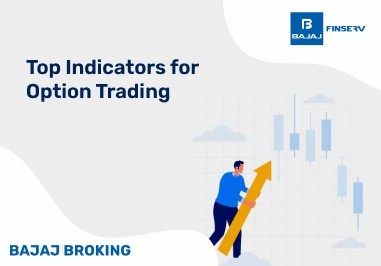Prop trading or proprietary trading is a practice in which institutions use their capital to trade in the stock market to generate profits. Where on the one hand traditional trading involves the participation of institutions on behalf of their clients, prop trading is all about trading for an institution's own benefit.
In this blog, we will take a look at everything you need to know about propriety trading including how it works, its different types and the benefits or drawbacks it has.
What is Proprietary Trading in Finance
When the question of ‘What is proprietary trading?’ arises, then a simple explanation that we can offer is that it is a practice through which financial institutions like broking houses or investment banks engage in trading.
However, you must understand that the trading thus carried out is done using the institution’s funds and not their client’s.
Additional Read: Trading Account: Definition, Types, How to Open & Key Benefits
How Does Proprietary Trading Work?
Here’s a look at how proprietary trading works:
In proprietary trading, financial institutions make use of their own capital to trade on the stock market to make profits.
To start off, these institutions first set aside some of their capital to give to their proprietary trading desk.
The prop trading desk in such institutions is usually manned by experienced traders who are backed by teams that focus on using research and technology to favour potential traders.
The desk is then responsible for analysing the news, any market data they might come across and indicators that can help them make profitable and well-informed trading decisions.
Once decisions have been reached regarding what trades are to be carried out, these prop traders use the right trading platforms and tech to enter and exit positions without hesitation.
There are many factors that might impact the profitability of prop trading including the market conditions, the skills of the traders on the prop desk and the kind of risk management practices that have been put in place.
Examples of Proprietary Trading
Here is a point-wise breakdown of an example of proprietary trading:
Let us start by taking a prop trading desk at a top institution in India into consideration.
The desk is supported by high-tech tools and experienced traders well versed in the ways of the stock and currency markets.
As a part of prop trading, the desk uses different strategies that include day trading and swing trading as well.
Prop trading desks take into account both the qualitative and quantitative assessments provided by the various tools available to them regarding market conditions.
Prop trading desks, apart from specialising in Indian equity markets are also equally well-versed in the global markets.
The sole aim of prop trading is to make the best of the market movements and produce profits for the institution.
Pros and Cons of Proprietary Trading
Like any other investment option, prop trading also has its advantages and disadvantages. Here’s a look at them.
Pros
Higher Profits:
When financial institutions work as brokers, the only way they earn is through commissions. However, with prop trading, these firms can earn higher profits as they are using their own capital to generate profits for themselves and not for their clients.
Stocking up on Securities:
These financial institutions can also look into stocking up on shares or securities while prop trading. These stored securities can then be sold to their clients when the market is tough.
Better Support:
For traders, firms that participate in prop trading will always offer a faster and well-structured support system. This is because their operations are more close-knit with fewer clients.
Better Liquidity:
Proprietary traders can deal with multiple open positions at the same time thus providing better liquidity management compared to retail traders.
More Variety:
More often than not, prop trading firms provide traders with different types of trading platforms which offer more flexibility.
Cons
Lack of Regulation:
Many prop trading firms are not subjected to tough regulatory practices, which can reduce operating costs but is riskier for traders in case they face fraud or mismanagement.
Higher Fees:
Many prop trading firms charge higher fees for using high-tech tools. This can eat into the potential profits that might be generated as a part of a trade.
Many prop trading firms charge higher fees for using high-tech tools. This can eat into the potential profits that might be generated as a part of a trade.
Intellectual Property Risks:
Since prop trading firms also indulge in trading using their own capital, traders might sometimes find their trading methods being used by the firm which could lead to the trader’s intellectual property rights being potentially compromised.
Additional Read: What is Options Trading?
Key Difference Between Hedge Fund vs. Prop Trading
Listed below are some of the main differences between hedge funds and prop trading.
Aspects
| Hedge Funds
| Prop Trading
|
Objective
| Generating profits for their clients or investors
| Focussed on trading to produce profits by financial institutions for itself using its own capital
|
Investor Base
| Institutional investors and HNIs. Retail investors very rarely
| The investor base solely consists of the financial institution trading.
|
Risk Management
| Includes hedging strategies like trading with a combination of long and short positions as a part of risk management
| Hedging via trading strategies and measures that help generate maximum profits while reducing losses to a great extent.
|
Fees
| The fees in hedge funding are usually dependent on a fund’s performance.
| Prop trading firms charge higher fees for using high-tech tools.
|
Conclusion
Proprietary trading or prop trading as it is also known, is a method through which financial institutions trade in the stock market to generate profits for themselves. The capital used is the firm’s own and the client’s investments are not utilised for this purpose. Institutions involved in prop trading have a specific prop trading desk that supports the practice with the help of experienced traders and state-of-the-art tech to provide insights into the market and make well-informed investment decisions.
Disclaimer: Investments in the securities market are subject to market risk, read all related documents carefully before investing.
This content is for educational purposes only. Securities quoted are exemplary and not recommendatory.
For All Disclaimers Click Here: https://bit.ly/3Tcsfuc














